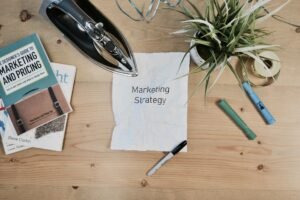Building a Diverse Workforce: Strategies for Implementing Inclusive Hiring Practices
In today’s diverse and interconnected world, organizations that prioritize building a diverse workforce reap numerous benefits. A diverse workforce brings fresh perspectives, fosters innovation, enhances problem-solving abilities, and increases overall employee engagement. However, achieving diversity requires more than just good intentions—it requires the implementation of inclusive hiring practices. In this blog post, we will explore five strategies to help organizations create a more inclusive hiring process and build a diverse workforce.
- Expand Sourcing Channels: To attract a diverse pool of candidates, organizations should expand their sourcing channels beyond traditional methods. Seek out partnerships with diverse professional organizations, attend career fairs focused on underrepresented groups, and leverage social media platforms to reach a wider audience. Additionally, consider establishing relationships with community organizations and universities that have diverse student populations. By diversifying sourcing channels, organizations can access a broader talent pool and increase the chances of finding qualified candidates from diverse backgrounds.
- Minimize Bias in Job Descriptions: Unconscious biases can inadvertently seep into job descriptions, deterring diverse candidates from applying. Review and revise job descriptions to ensure they are inclusive and do not contain gendered language or unnecessary requirements that may disproportionately affect underrepresented groups. Focus on the essential skills and qualifications needed for the role, rather than relying on arbitrary criteria. Additionally, consider using software tools that help identify and eliminate biased language in job descriptions.
- Implement Blind Resume Screening: Blind resume screening involves removing identifying information (such as name, gender, age, and educational institutions) from resumes before they reach the hiring managers. This strategy helps eliminate biases related to a candidate’s background and allows for a more objective evaluation of their qualifications. Implementing blind resume screening can help organizations assess candidates solely based on their skills, experience, and potential, promoting diversity and fairness in the hiring process.
- Structured Interviewing and Evaluation: Unstructured interviews can be prone to biases and subjective judgments. Implement structured interviewing techniques that involve predetermined questions and evaluation criteria for all candidates. This approach ensures consistency and fairness in the assessment process. Training interviewers on unconscious bias and proper interview techniques can further reduce bias and promote a more inclusive hiring process. Additionally, consider including a diverse panel of interviewers to provide multiple perspectives and minimize individual biases.
- Foster Inclusive Candidate Experience: The candidate experience is a crucial aspect of building a diverse workforce. Ensure that every candidate feels welcomed and included throughout the hiring process. Provide clear communication, prompt feedback, and transparency about the process. Offer accommodations for candidates with disabilities or specific needs. Moreover, showcase your organization’s commitment to diversity and inclusion on your website and in recruitment materials, as it can attract candidates who align with your values.
Building a diverse workforce requires intentional efforts to implement inclusive hiring practices. By expanding sourcing channels, minimizing bias in job descriptions, implementing blind resume screening, utilizing structured interviewing techniques, and fostering an inclusive candidate experience, organizations can attract and hire a more diverse talent pool. Embracing diversity not only strengthens the organization’s ability to innovate but also enhances its reputation as an inclusive and equitable employer. By valuing and respecting differences, organizations can create a more vibrant and successful work environment for all employees.

































